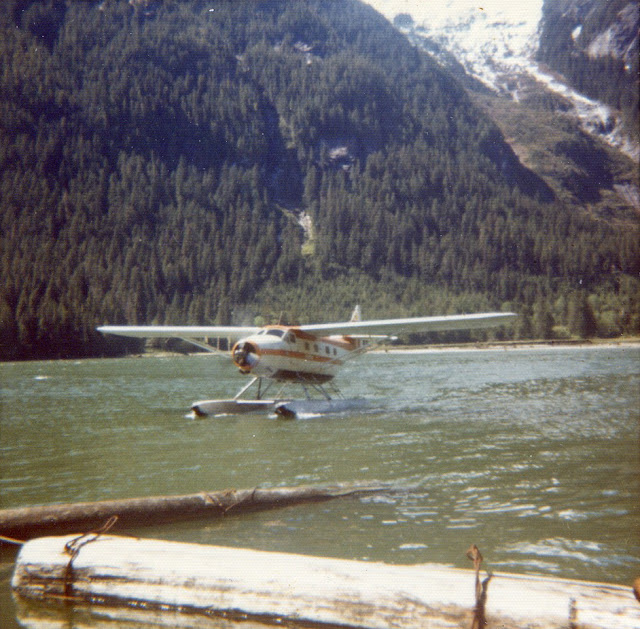Bristol Blenheim Mk. IVF, T1807, LA-E, No. 235 Squadron, Coastal Command, RAF, based at RAF Bircham Newton, Norfolk, England since June 24, 1940; powered by two 920-hp Bristol Mercury XV supercharged nine-cylinder air-cooled radial piston engines with variable-pitch three-blade Hamilton Standard propellers; retractable landing gear; crew of three (pilot, navigator/observer, gunner), long-range fighter-reconnaissance; built by Bristol Aerospace Company, Royal West of England Academy, Bristol, England; built as Blenheim Mk. IV; converted to Blenheim Mk. IVF; armament of one .303-inch Browning machine gun in port wing; four fixed forward-firing .303-inch Browning machine guns in special ventral pack; manually-operated powered dorsal turret with two .303-inch Browning machine guns; four 250-lb bombs externally-mounted on underbelly of fuselage aft of ventral pack.
No. 235 Squadron crest, motto of Jaculamur humi (We strike them to the ground), badge is a double Wyvern spouting fire.
“Death in Blue”
The clear, blue sky, brushed by a few distant vapour trails, spun, twirled, in slow clockwise motion. Nothing but silence. Peace.
These were the days of the Battle of Britain. We left on a low-altitude coastal reconnaissance to the Dutch coastline in the early afternoon of September 13, 1940. The late-summer sun was already seasonally a little thinner. We were nearing the island of Texel in the province of North Holland. I was the dorsal turret gunner of the Bristol Blenheim Mk. IVF, T1807, call letters LA-E, a high-speed long-range fighter-reconnaissance aircraft. We had to be careful of Messerschmitt Bf 109s and Bf 110s with their 20-mm MG FF cannons, while looking for Heinkel He 111s, Junkers Ju 88s, and Dornier Do 17s. We were from No. 235 Squadron, based at RAF Bircham Newton, attached to Coastal Command, protecting and escorting shipping convoys from German maritime patrol aircraft and long-range bombers, running reconnaissance missions over the North Sea, and protecting downed Allied aircrews until rescue craft arrived.
I swung my hydraulically-assisted gun turret of two Browning .303s the full 360 degrees in slow, steady ellipticals and lemniscates across the sky. It appeared to be a routine run flirting at the edges of boredom. I arced through the blinding sun. A short, deep jolt of pain followed a staccato burst from the golden glare. It cut through my chest. The aluminum and plexiglass dome came apart in shreds, shards, and strips. I was somersaulted into the blue. The roar of the two radial piston engines fell away. I was at peace as the light chop of the sea reached up to encircle me in her arms. Cold and yet warm at the same time.
I was a 19-year-old farmer’s son from a small village in West Yorkshire. The Royal Air Force meant life in an itchy blue-grey wool uniform, leather flight jacket, and leather flying helmet with flying goggles and oxygen mask.
We were pushed through a rapid training in ground and flight school. I joined No. 235 Squadron in late June 1940 with the rank of Sergeant, just days after it moved to Bircham Newton in the west of the county of Norfolk, eight miles west of Fakenham, on June 24, 1940. I was proud of our motto, Jaculamur humi (We strike them to the ground). No. 235 Squadron was formed on August 20, 1918 from Nos 424 and 425 Flights, RNAS, at the seaplane station at Newlyn, Cornwall, flying Short 184 seaplanes on anti-submarine patrols until the Armistice and disbanding on February 22, 1919. No. 235 was reformed as a fighter squadron at RAF Manston on October 30, 1939, receiving Fairey Battle light bombers for training purposes in December. In February 1940 the squadron was equipped with Blenheims and transferred from Fighter Command to Coastal Command on February 27, 1940 for fighter-reconnaissance duties. With the German invasion of the Low Countries in May 1940, No. 235 Squadron flew patrols over Holland.
Many times in childhood I awoke from nightmares of falling through the sky. They started in my ninth year. Bit by bit the past returned—the full-colour scenes, cinematic reels, running through my mind, through my sleep, each time a little more lucid. Mother or father would come to my bedside, always calm, singing German lullabies, saying a child’s prayer by Rudolf Steiner. I asked many questions about life, death, and life after death. By my teen years, studies of Steiner’s epistemological works and lectures were my solace, the key to my searching, feeding the spiritual yearning, while the image of falling through the sky filled itself with a life of memory, clear and concise in its delineations and details.
Around puberty in the summer of 1975, a few months shy of my 13th birthday, my fascination with aviation became an obsession, finding its fullest expression in all matters of World War Two aviation, but in particular with the RAF and the Battle of Britain. In September I joined the RCAirC (Royal Canadian Air Cadets) at 744 Cowichan Squadron with the sole intent of becoming a pilot. The blue-grey wool uniform was like coming home again.


























